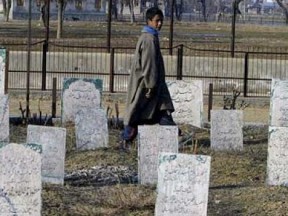More than four persons per day were killed in police and judicial custody in India between 2001 and 2010. The total of 14,231 persons includes 1,504 deaths in police custody and 12,727 deaths in judicial custody from 2001-2002 to 2009-2010 as per the cases submitted to the National Human Rights Commission (NHRC).The New Delhi-based Asian Centre for Human Rights in its report, Torture in India 2011, said that a large majority of these deaths were a direct consequence of torture in custody. These deaths reflect only a fraction of the problem with torture and custodial deaths in India as not all the cases of deaths in police and prison custody are reported to the NHRC. Further, the NHRC does not have jurisdiction over the armed forces and the NHRC also does not record statistics of torture not resulting into death.
“The failure of the Ministry of Home Affairs to introduce the Prevention of Torture Bill drafted by the Rajya Sabha Select Committee headed by Ashwani Kumar, the current Minister of State for Planning, in December 2010 in the Parliament session beginning on November 22 demonstrates India’s lack of political will to stamp out torture,” said Suhas Chakma, ACHR Director.
During 2001-2010, Maharashtra recorded the highest number of deaths in police custody with 250 deaths; followed by Uttar Pradesh (174); Gujarat (134); Andhra Pradesh (109); West Bengal (98); Tamil Nadu (95); Assam (84); Karnataka (67); Punjab (57); Madhya Pradesh (55); Haryana (45); Bihar (44); Kerala (42); Jharkhand (41); Rajasthan (38); Orissa (34); Delhi (30); Chhattisgarh (24); Uttarakhand (20); Meghalaya (17); Arunachal Pradesh (10); Tripura (8); Jammu and Kashmir (6); Himachal Pradesh (5); Goa; Chandigarh and Pondicherry (3 each); Manipur, Mizoram and Nagaland (2 each); and Sikkim and Dadra and Nagar Haveli (1 each).
“About 99.99 per cent of deaths in police custody can be ascribed to torture and occur within 48 hours of the victims being taken into custody. Though Maharashtra has a total population of 112 million in comparison to 199 million in Uttar Pradesh according to 2011 census, the fact that 76 more persons were killed in police custody in Maharashtra shows that torture is more rampant in police custody in Maharashtra than Uttar Pradesh,” said Chakma.
During 2001-2010, 12,727 deaths in judicial custody took place. Uttar Pradesh recorded the highest number of deaths in judicial custody with 2171 deaths, followed by Bihar (1512); Maharashtra (1176); Andhra Pradesh (1037); Tamil Nadu (744); Punjab (739); West Bengal (601); Jharkhand (541); Madhya Pradesh (520); Karnataka (496); Rajasthan (491); Gujarat (458); Haryana (431); Orissa (416); Kerala (402); Chhattisgarh (351); Delhi (224); Assam (165); Uttarakhand (91); Himachal Pradesh (29); Tripura (26); Meghalaya (24); Chandigarh (23); Goa (18); Arunachal Pradesh (
9); Pondicherry (8); Jammu and Kashmir and Nagaland (6 each); Mizoram (4); Sikkim and Andaman and Nicober Island (3 each); and Manipur and Dadra and Nagar Haveli (1 each).
The number of deaths in police custody recorded from conflict-afflicted states like Jammu and Kashmir and Manipur do not reflect the gravity of the situation. The NHRC registered only six deaths in police custody in Jammu and Kashmir from 2001-02 to 2010-11, while only two cases of deaths in police custody were recorded from Manipur during the same period. This is despite the fact that on March 31, 2011 Jammu and Kashmir Chief Minister Omar Abdullah in a written reply before the Legislative Council stated that 341 persons had died in police custody in the state since 1990. Custodial rape remains one of the worst forms of torture perpetrated on women by law enforcement personnel and a number of custodial rape of women takes place at regular intervals. NHRC recorded 39 cases of rape from judicial and police custody from 2006 to February 28, 2010.
Maoists remain the worst violators of human rights including torture and they have been responsible for brutal killing of their hostages after abduction. Often the hostages were killed by slitting their throats or beheading. The suspects were tried and handed over death sentences or subjected to torture through the socalled “Jan Adalats” (Peoples’ Courts) in full public view to instill fear among the people.
“India is yet to realise the cost of not having anti-torture law in compliance with UN Convention Against Torture (UNCAT) that led to rejection extradition of Kim Davy, the prime accused in the Purulia arms drop case by the Danish High Court in June 2011; the direction of a British Court in July 2011 to depute a human rights expert to visit the prisons in Gujarat to examine the prison conditions before it grants extradition of Mohammad Hanif Umerji Patel, alias Tiger Hanif, the alleged mastermind of the 1993 bomb blast in Surat; and cancellation of the extradition of Abul Salem by the Portuguese High Court in September 2011 on the ground that he was tortured in custody following extradition. That torture is non-derogable even in war and a crime against humanity is yet to be recognized by India,” said Chakma.
This article was originally written for the Deadline Delhi column in Asian Correspondent. It has been reproduced here with the author’s permission. Subir Ghosh blogs at www.write2kill.in.






